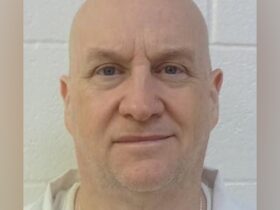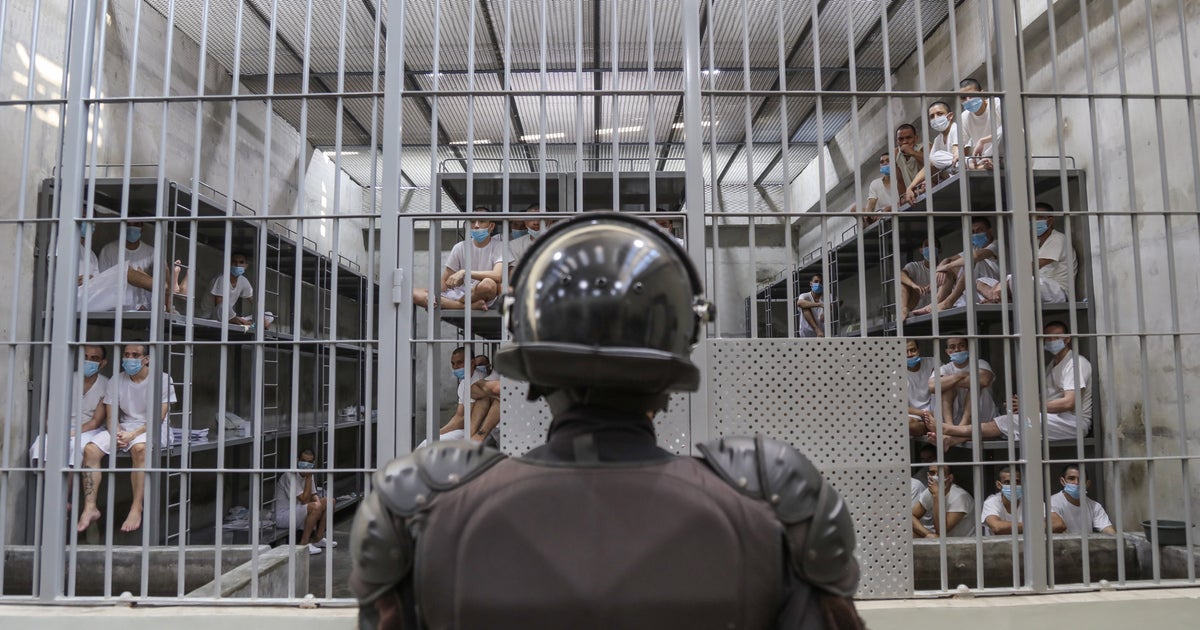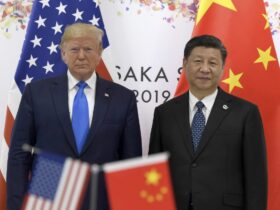Last month, Frizgeralth de Jesús Cornejo Pulgar, an asylum-seeker from Venezuela, was scheduled for a routine hearing in immigration court.
But as Mother Jones reports, he never made it because he’d been whisked off without due process to El Salvador’s Terrorism Confinement Center (CECOT) along with 230 Venezuelan immigrants.
Since President Donald Trump began to carry out what he claimed would be the “largest deportation” campaign in U.S. history earlier this year, there have been a number of cases where immigrants like Cornejo Pulgar have just “disappeared.”
In January, Ricardo Prada Vásquez, a Venezuelan man working a delivery job and picking up food at a McDonald’s in Detroit, Michigan, was deported and “disappeared” to El Salvador after taking a wrong turn into Canada.
“Ricardo’s story by itself is incredibly tragic — and we don’t know how many Ricardos there are,” Ben Levey, a staff attorney with the National Immigrant Justice Center who tried to locate Prada Vásquez, told The New York Times.
Immigration and Customs Enforcement officials ultimately confirmed to him that he had been deported but did not divulge his destination. After the abductions, families of men like Prada Vásquez search but the names of their loved ones disappear from the U.S. Immigration and Customs Enforcement’s online detainee locator.
Could what’s happening to immigrants under Trump be classified as “enforced disappearances”? We spoke with academics and researchers who study how rogue states “disappear” people.
First, what does it mean to “disappear” a person?
According to the United Nations, an “enforced disappearance” occurs when agents of the state (or groups acting with its authorization and support) arrest, detain, abduct or in any other way deprive a person of their liberty. The state then refuses to disclose the fate or whereabouts of the person concerned.
If you’re wondering whether this is legal or illegal, it’s actually neither. “The inherent consequence of an enforced disappearance is that the person is placed outside the protection of the law, in a sort of legal limbo,” said Gabriella Citroni, an adjunct professor of international human rights law at the university of Milano-Bicocca in Milan, Italy, and a chair-rapporteur of UN expert group on enforced or involuntary disappearances.
Unlike other crimes under international law, such as torture, enforced disappearances were not prohibited by a universal legally binding instrument before a UN Convention came into effect in 2010.
Disappeared people frequently include political opponents, protesters, human rights defenders and community leaders, students and members of minorities, Citroni said.
The Washington Post via Getty Images
“Typically, enforced disappearances are used to suppress freedom of expression or religion, or legitimate civil strife demanding democracy, as well as against persons involved in the defense of the land, natural resources and the environment and to fight organized crime or counter terrorism,” she said.
Enforced disappearance functions as a tool of terror in two ways, said Oscar Lopez, a journalist based in Mexico City working on a book about the origins of forced disappearance during Mexico’s “Dirty War.”
“First, the victim is deprived of due process and often subjected to torture as well as the psychological hell of not knowing what’s going to happen to them and possibly fearing for their life,” he told HuffPost.
Secondly, enforced disappearance forces families and communities into a state of painful uncertainty, Lopez said. “They don’t know whether their relative is alive or dead and toggle between desperate hope and unbearable despair.”
When disappearances occur frequently enough, they can leave entire communities in a state of terror, unsure of who might be taken next, Lopez said.
What has happened to disappeared people in the past?
What happens to people involuntarily disappeared depends “very much on the context” in which they are taken, Lopez said. But generally speaking, if the person is kept alive, they’re held in state custody for an indeterminate amount of time without the ability to communicate with their family or legal counsel ― aka they’re “held incommunicado.”
If the person is killed, their bodies are often disposed of in such a way that it becomes almost impossible for them to be found.
“This can mean burying them in unmarked graves, cremating their remains, or, as happened in Latin America, throwing their corpses out to sea,” he said.
Where have enforced disappearances happened before?
Lopez pointed to a few examples: In Argentina, during the military dictatorship between 1976 and 1983, an estimated 30,000 people were disappeared. In nearby Chile, more than 1,000 people went missing under the dictatorship of Augusto Pinochet, while in Guatemala, some 45,000 people were forcibly disappeared during the country’s civil war, which lasted from 1960 to 1996. In North Korea, instances of enforced disappearances and abductions date back to 1950.
“There are more recent instances of enforced disappearance, too,” he said. “In Syria, for example, it’s estimated that 136,000 people were disappeared under the Assad dictatorship.”
But enforced disappearances aren’t always carried out directly by state agents. said Adam Isacson, who leads border and migration work at the Washington Office on Latin America.
Hundreds of thousands of people have been disappeared each by irregular groups in Colombia and Mexico, operating with the tacit permission or even assistance of government officials.
“Sometimes, as with the anti-communist paramilitaries in Colombia and death squads in 1980s El Salvador, the officials colluded with the groups out of some ideological alliance,” he said. “Sometimes, as with corrupt Mexican cops who assist organized crime, they do it because they profit from it.”

VICTOR ROJAS via Getty Images
Could what’s happening in the U.S. now with immigrants be considered “enforced disappearances”?
In spite of existing court orders and legal challenges, the Trump administration continues its deportation policy in El Salvador, in partnership with the county’s President Nayib Bukele.
Venezuelan migrants have been targeted in particular for deportation, many on unproven allegations of gang affiliation. That said, Trump has also repeatedly said he’s “all for” looking for ways to detain U.S. citizens in foreign jails.
Should we be calling what’s happening now “forced disappearances”? A report released by the UN in April suggests yes.
The incommunicado detentions appeared to involve “enforced disappearances, contrary to international law,” the report said.
“Many detainees were unaware of their destination, their families were not informed of their detention or removal, and the U.S. and Salvadoran authorities have not published the names or legal status of the detainees,” the UN experts wrote. “Those imprisoned in El Salvador have been denied the right to communicate with and be visited by their family members.”
Isacson agrees that we should be calling a spade a spade here.
“The only difference between that and what was done in 1970s Chile or Argentina is that loved ones have more reason to believe that their relatives are still alive and haven’t been killed,” he said.
But even that certainty is not complete, he said: “Can you say with 100% confidence that Andry Hernandez ― the gay Venezuelan stylist that disappeared two months ago ― is still alive right now? He probably is, but you absolutely cannot guarantee that, and no one will confirm it.”
The raids and deportations have certainly struck fear into American communities ― another classic characteristic of enforced disappearances. The Trump administration has openly said that its goal is to try to make life so difficult for immigrants that they “self-deport.”
Fear of being sent to a notorious El Salvador prison, where inmates never see the light of day, plays into that goal, said Rod Abouharb, an associate professor of international relations who researches forced disappearances at the University College London.
“These raids send out a chilling effect on those individuals who may be undocumented and even those who are legally in the United States: that they may be caught up in one of these raids, disappear into the prison system, and deported to a third country they may have no connection with,” he told HuffPost.

Alex Peña via Getty Images
What can regular citizens do in response to enforced disappearances?
The best thing Americans can do to object to efforts like this is to draw as much attention as possible to individual cases, Lopez said.
“Whether that’s by holding protests, creating online petitions or posting on social media, ensuring that a person who the government has tried to disappear remains visible and in the public discourse can be a powerful way to draw national attention to their plight and the plight of others like them.” he said.
Isacson thinks it’s important to encourage senate and congressional Democrats who’ve stood up and made headlines, like Sen. Chris Van Hollen (Md.). Back in April, Van Hollen pushed for a face-to-face meeting with Kilmar Abrego Garcia ― a Salvadoran native living in Maryland who was deported in March to El Salvador despite a 2019 court order barring his deportation to that country due to fear of persecution.
“Democrats will actually help themselves politically if they keep making a lot of righteous noise about this,” he said.
Americans should write to Republican moderates who seem quietly uncomfortable about forced disappearances and might be persuaded to action, Isacson said.
“All of us to stay vocal about this,” he said. “Keep protesting, keep writing about it and keep calling your legislators.”
















Leave a Reply